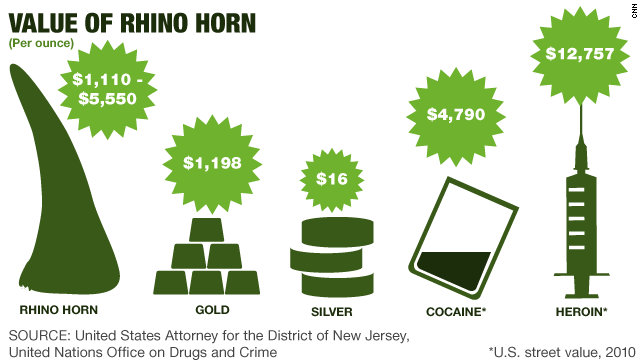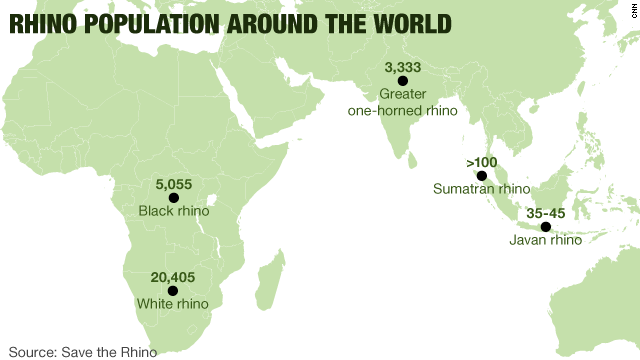A single horn can fetch $100,000 in Asian countries such as China and Vietnam, where there is intense demand from buyers who mistakenly believe it can cure health problems from hangovers to cancer, or use it as a lifestyle drug. The global market is worth around $500 million, and growing rapidly.

The figures are daunting for conservationists, but a California biotech startup believes it has a solution. Pembient is producing synthetic rhino horns to offer consumers an ethical alternative. After a lengthy development period, the finished product will be on sale within months.
The process involves fabricating protein that the team claim is identical to the keratin found in rhino horns. That protein is produced as a powder, which is then shaped and manufactured with advanced 3D printing techniques until it is indistinguishable from the real thing.
The tools and techniques required have finally matured enough to make this possible, says CEO Matthew Markus.
"The cost of sequencing genomes has come way down, as has the synthesis of DNA," says the former computer engineer. "A lot of things are going in the right direction now, which makes some of these products feasible."
Pembient roll out their prototypes at an Indie Bio San Francisco accelerator event in June, and are hoping to make their first sales in September. Their first commercial partnership is with a Beijing craft brewery, and beyond that their ambition is to capture "10-25%" of the market.
Markus is inspired by the success of marijuana after legalization in the USA, and believes the synthetic horns will have a ready niche of users that want a legitimate source.
"One goal is to bring people out of criminal networks, many will prefer to have safety standards and quality that the black market can't provide."
However, conservationists are skeptical that synthetic horns can reduce demand for the real thing, which has greater prestige.

"There is already a huge amount of fake horn in circulation, of varying quality, that hasn't dented demand," says Dr. Colman O' Criodain, trade expert at the World Wildlife Fund. "Many people who want it have trusted suppliers and want it to have come from living rhinos."
O'Criodain favors a twin strategy of targeted efforts to change consumer behavior and far more rigorous law enforcement. More radical approaches include poisoning horns to deter poachers, or to farm rhinos and legalize the horn trade where it can be verified as ethical.
With 1 male left, northern white rhinos under guard
Markus points to rising poaching rates as proof that new ideas are needed, and believes the purity of his product will tempt even the connoisseurs - as well as baffling the traffickers.
Should Pembient be successful with their horns, they will be followed by artificial pangolin scales, elephant tusks and tiger bone. This would encourage a developing field seeking to eliminate animal-based products, with companies such as Clara Foods and Muufri working to synthesize dairy products.
Printing bone and other keratin-based organic matter could pave the way for printing living tissue for humans use. In 2010, Columbia University researchers were able to fabricate teeth, and today San Diego firm Organovo have synthesized human liver samples for drug testing and are developing skin.
"I think we are five to ten years out from living tissue trials on humans," says Dr. Christopher Barnatt, a 3D printing expert at the University of Nottingham. "The main problem is keeping printed cells alive until you can transplant them into a human."
Both China and the USA have announced massive investment in 3D printing programmes, Barnatt adds, and over 40% of 3D printing patents are for medical purposes.
Should Pembient's rhino parts pass muster, we may be next in line.
Texas hunter bags his rhino on controversial hunt in name of conservation
Source Article from http://rss.cnn.com/~r/rss/cnn_tech/~3/RV2n0XDgEYY/index.html http://revealedtech.com/image/gif;base64,R0lGODlhEAAJAJEAAAAAAP///////wAAACH5BAEAAAIALAAAAAAQAAkAAAIKlI+py+0Po5yUFQA7
Startup makes rhino horns - without rhinos

No comments:
Post a Comment